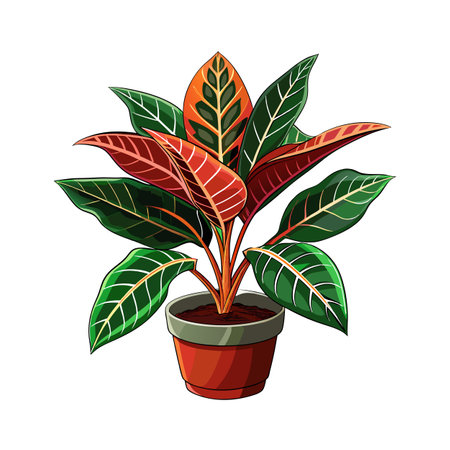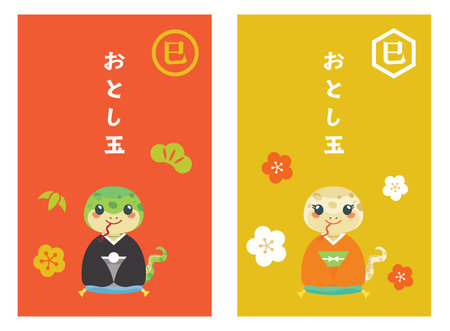Understanding Feng Shui Principles in a Modern American Home
Feng Shui is an ancient Chinese philosophy focused on creating balance and harmony within a space. In today’s fast-paced American lifestyle, these principles can be surprisingly relevant and easy to apply—especially when it comes to adding houseplants to your home. Whether you live in a suburban house, city apartment, or cozy condo, understanding the basics of Feng Shui can help you attract positive energy (or “chi”) and create a welcoming environment.
What Is Feng Shui?
At its core, Feng Shui is all about arranging your living space so that energy flows smoothly and supports your well-being. It takes into account the five elements—wood, fire, earth, metal, and water—and how they interact with each other. When these elements are balanced in your home, it’s believed that you’ll experience greater happiness, health, and prosperity.
Why Does Feng Shui Matter for Houseplants?
Houseplants are more than just decorative—they bring the wood element indoors, symbolizing growth, vitality, and fresh beginnings. In American homes where open floor plans and large windows are common, plants can soften sharp corners, filter indoor air, and connect us to nature even in urban environments.
Adapting Ancient Wisdom for Modern American Living
You don’t need to follow every traditional Feng Shui rule to benefit from its wisdom. Instead, think about which ideas fit your personal style and living situation. Here’s a simple comparison of classic Feng Shui concepts and how they translate to contemporary American interiors:
| Traditional Feng Shui Concept | Modern American Adaptation |
|---|---|
| Balance the five elements | Mix materials like wood furniture (wood), candles (fire), pottery (earth), metal decor (metal), and fountains (water) |
| Avoid cluttered spaces | Embrace minimalist design or tidy up common areas regularly |
| Invite natural light and fresh air | Open blinds, use light curtains, or place plants near windows for sunlight |
| Select plant shapes based on energy needs | Add leafy plants for calm vibes or upright plants like snake plants for motivation |
Simple Ways to Start Using Feng Shui with Houseplants
- Choose easy-care plants that thrive in your climate zone and lighting conditions.
- Place plants in spots where you spend lots of time—like your living room or home office—to boost mood and productivity.
- Avoid overcrowding; give each plant some breathing room so energy can flow freely around them.
- If you’re new to houseplants, start with one or two favorites before expanding your indoor jungle.
This foundation will help you make thoughtful choices as you explore how specific houseplants can enhance good energy throughout your modern American home.
2. The Best Houseplants for Positive Chi: Popular and Accessible Choices
When you’re new to Feng Shui, picking the right houseplants is one of the easiest ways to welcome good energy (or “chi”) into your home. In the US, there are plenty of options that are beginner-friendly, widely available at garden centers or big box stores, and safe for households with pets and kids. Here’s a handy guide to help you choose plants that will not only boost your space’s vibe but also fit your lifestyle.
Why Houseplants Matter in Feng Shui
Houseplants are believed to bring life force, purify the air, and create harmony. They symbolize growth, renewal, and vitality—core values in both Feng Shui and everyday American home life. But not all plants work the same way. Choosing the right ones ensures positive chi without extra hassle or worry.
Beginner-Friendly Houseplants for Good Energy
| Plant Name | Easy to Care For? | Pet Safe? | Where to Place | Feng Shui Benefits |
|---|---|---|---|---|
| Spider Plant (Chlorophytum comosum) | Yes | Yes | Living room, kitchen, bathroom | Purifies air, brings lively energy |
| Bamboo Palm (Chamaedorea seifrizii) | Yes | Yes | Corners, entryways | Adds fresh chi, symbolizes resilience |
| Pothos (Epipremnum aureum) | Yes | No* | Shelves, hanging baskets, offices | Brings abundance and ease of growth |
| Boston Fern (Nephrolepis exaltata) | Yes | Yes | Laundry room, bathrooms, windowsills | Cleanses energy, softens sharp corners |
| Lucky Bamboo (Dracaena sanderiana) | Yes (in water) | No* | Desk, dining table, near entryway | Symbolizes luck and prosperity |
| African Violet (Saintpaulia) | Yes | Yes | Kitchens, windowsills, bedrooms | Adds gentle energy and color; encourages harmony |
| Areca Palm (Dypsis lutescens) | Yes | Yes | Main rooms with indirect light | Cleans air and brings uplifting vibes |
*If you have curious pets that like to chew on plants, avoid Pothos and Lucky Bamboo.
Tips for Success With Your Plants
- Select pots with drainage: This prevents root rot and keeps your plants healthy.
- Avoid clutter: Too many plants in one spot can block energy flow instead of enhancing it.
- Caring is key: Wipe dust off leaves regularly and remove any dead foliage to keep the chi flowing smoothly.
Your Next Steps in Feng Shui Plant Placement
The most important thing is to enjoy bringing nature indoors while following simple care tips. These easy-to-find houseplants can quickly transform your home into a haven of positive energy—no green thumb required!

3. Where to Place Your Plants: Feng Shui Guidelines for Every Room
Choosing the right houseplants is just one step—where you put them matters, too! In Feng Shui, plant placement helps attract positive energy, or “chi,” and supports harmony and growth. Here’s a room-by-room guide on where to place your plants for the best effect in American homes, from cozy apartments in New York City to spacious houses in Texas.
Entryway
The entryway sets the tone for your home’s energy. Place a healthy, upright plant like a snake plant or jade near the door (but not blocking it) to welcome good vibes and prosperity. Avoid thorny or droopy plants here as they can push energy away.
Living Room
This is where family and friends gather, so encourage connection and relaxation with lush, rounded-leaf plants such as pothos or peace lilies. Put them in corners or beside sofas to soften sharp angles and make the space feel inviting.
| Plant Type | Best Placement | Feng Shui Benefit |
|---|---|---|
| Pothos | Corners, shelves | Balances stagnant energy |
| Peace Lily | Near seating areas | Promotes calmness and purity |
| Rubber Plant | Beside windows | Brings wealth and resilience |
Kitchen
The kitchen represents nourishment and abundance. Fresh herbs like basil or mint on sunny windowsills boost both flavor and fortune. If space allows, add a small money tree on the counter to invite financial luck.
Tip:
Avoid placing spiky cacti here—they can create tension in this important space.
Bedroom
This is your sanctuary for rest. Choose gentle air-purifying plants like lavender or snake plant (mother-in-law’s tongue). Place them across from your bed—not directly next to your pillow—to keep the energy calm and balanced.
Tip:
If you’re in a drier region like Arizona, succulents are a low-maintenance option that won’t disrupt sleep.
Home Office
Plants can support focus, creativity, and productivity. A bamboo plant on your desk symbolizes growth, while a spider plant by the window purifies air and reduces stress. Keep workspaces uncluttered; too many plants can distract from your tasks.
| Room | Recommended Plants | Main Benefit |
|---|---|---|
| Entryway | Snake Plant, Jade Plant | Welcomes good energy |
| Living Room | Pothos, Peace Lily, Rubber Plant | Cultivates harmony & relaxation |
| Kitchen | Basil, Mint, Money Tree | Nourishment & abundance |
| Bedroom | Sanke Plant, Lavender, Succulents (dry regions) | Aids restful sleep & air quality |
| Home Office | Bamboo, Spider Plant, Aloe Vera | Supports focus & growth mindset |
Regional Differences in US Homes
If you live in humid Southern states (like Florida), ferns thrive indoors. In dry Western areas (like Colorado), opt for succulents or ZZ plants that need less water. Always consider light levels—East-facing windows are great for morning sun lovers; North-facing rooms benefit from shade-tolerant greenery.
Quick Placement Tips by Room Size:
- Tiny apartments: Use hanging planters or wall-mounted pots to save floor space.
- Larger homes: Create clusters of different-sized plants for visual interest without crowding pathways.
- Open layouts: Use tall plants as natural dividers between functional zones (living vs dining).
This room-by-room approach helps you use Feng Shui principles to bring more balance, vitality, and positivity into any US home—no matter where you live or how much space you have!
4. American Lifestyle Tips: Caring for Your Feng Shui Plants
Making Plant Care Easy for Busy Americans
Bringing Feng Shui houseplants into your home is a great way to attract good energy, but keeping them healthy can feel challenging, especially with a packed schedule. Here’s how you can easily care for your Feng Shui plants, even if you’re always on the go.
Basic Care Needs at a Glance
| Plant Type | Watering Schedule | Light Requirements | Feng Shui Benefit |
|---|---|---|---|
| Snake Plant | Every 2-3 weeks | Low to bright, indirect light | Cleans air, protects energy |
| Pothos | Once a week | Medium to low light | Attracts wealth and positivity |
| Lucky Bamboo | Change water weekly | Indirect light only | Brings luck and growth |
| Peace Lily | Weekly, keep soil moist | Medium, indirect light | Cleanses negative vibes |
| Aloe Vera | Every 2-3 weeks (let soil dry) | Bright, indirect light | Healing energy, protection |
Integrating Plant Care Into Your Daily Routine
- Create Reminders: Use your phone or smart home device to set watering reminders—this keeps you on track even during busy weeks.
- Easy Watering Solutions: Keep a small watering can handy in your kitchen or bathroom so you remember to water while doing other daily tasks.
- Combine Chores: Water your plants while making coffee or tidying up in the morning. This helps make it a natural part of your day.
- Select Low-Maintenance Plants: Choose sturdy plants like snake plant or pothos if you travel often or have an unpredictable schedule.
- Pest Prevention: Wipe leaves with a damp cloth every few weeks and check for bugs when dusting your home.
- Simplify Light Needs: Place plants near windows that get plenty of natural light but avoid direct sun for sensitive species. Rotate pots every month to ensure even growth.
- Mental Breaks: Taking just five minutes to tend your plants can double as a mindful break from work or screen time—helpful for stress relief and boosting good energy.
Your Feng Shui Plant Care Checklist:
- Check soil moisture before watering—overwatering is more common than underwatering!
- Remove dead leaves regularly to promote healthy new growth and better energy flow.
- Dust leaves gently to let plants breathe and keep their energy strong.
- If you leave town, group plants together in the bathtub with a little water—they’ll stay hydrated longer.
- If possible, assign plant care as a shared family task—it’s an easy way to involve everyone in creating positive home energy.
A Few Extra Tips for Success:
- If your space has low light, consider LED grow lights—these are affordable and easy to set up in any apartment or house.
- Bigger isn’t always better; smaller plants fit perfectly on desks, shelves, or kitchen counters where you see them every day and remember to care for them.
- If you struggle with allergies, choose plants known for air-purifying qualities like peace lily or snake plant.
5. Avoiding Common Pitfalls: What Not to Do with Houseplants and Feng Shui
Overcrowding Your Space
One of the most common mistakes in American homes is overcrowding rooms with too many plants. While it’s tempting to create a lush, green vibe, Feng Shui values balance and flow. Too many houseplants can block energy pathways (Qi), making spaces feel cluttered and overwhelming instead of calm and inviting.
| Issue | Why It’s a Problem | Feng Shui Solution |
|---|---|---|
| Too Many Plants in One Area | Blocks positive energy flow; looks messy | Keep 1-3 healthy plants per room, depending on size |
| Plants Crowded Together | Makes it hard for plants and energy to breathe | Allow space between each plant for air and Qi movement |
Poor Placement Choices
The right placement is key for both plant health and good Feng Shui. Placing plants in the wrong spots can disrupt energy or even bring bad luck, according to traditional Feng Shui wisdom.
- Blocking Doors or Walkways: Never put large plants where they block entrances or hallways. This restricts the flow of energy into your home.
- Plants in Bedrooms: Some Feng Shui experts recommend limiting the number of plants in bedrooms, as excess greenery may disturb restful sleep due to increased yang energy.
- Dead Corners: Plants are great for activating dead corners, but don’t use thorny or spiky varieties (like cacti) in these spots—they can create sharp energy (“sha chi”). Choose leafy, rounded plants instead.
Choosing Incompatible Plants
Not all houseplants are equal when it comes to Feng Shui. Some popular American choices might not be ideal if you want to attract good vibes.
| Plant Type | Feng Shui Compatibility | Notes for US Homes |
|---|---|---|
| Cactus/Succulents with Spikes | Poor (creates sharp energy) | Avoid near entryways, desks, or bedrooms |
| Fake Plants/Flowers | Poor (no life force) | If used, keep them clean and replace if faded/dusty |
| Dying/Unhealthy Plants | Poor (attracts negative energy) | Remove or revive immediately; never ignore droopy leaves! |
| Bamboo, Jade Plant, Pothos, Money Tree | Excellent (brings prosperity & growth) | Easily found in US stores; low maintenance options |
Poor Plant Care Habits
No matter how good your intentions are, neglected houseplants can quickly shift from being a source of positive energy to one of stagnation and decay.
- Letting Water Accumulate: Overwatering leads to mold and rot—both considered bad for Feng Shui.
- Dusty Leaves: Dust blocks light and healthy energy; wipe leaves regularly.
- Ineffective Pot Drainage: Use pots with drainage holes to prevent root rot.
- Nutrient Deficiency: Feed plants occasionally so they stay vibrant and strong—healthy plants = healthy home energy!
By avoiding these common pitfalls and following basic Feng Shui principles alongside practical care tips, you’ll set up your houseplants—and your home—for positive, harmonious energy.

